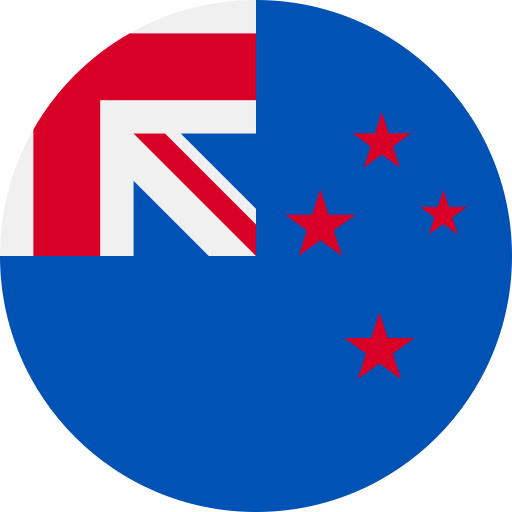Key Takeaways
- Historical Evolution: New Zealand English has developed through centuries of cultural influences, including colonization and the integration of Māori language, shaping a distinct Kiwi identity.
- Media Influence: Traditional media platforms like radio and television have significantly impacted the standardization and evolution of New Zealand English by showcasing local dialects and accents.
- Digital Transformation: The rise of social media and online news outlets has accelerated the evolution of New Zealand English, blending traditional expressions with contemporary slang in real-time communication.
- Phonetic Characteristics: Unique phonetic traits, such as vowel shifts and glottal stops, contribute to an identifiable Kiwi accent that is prevalent across various media formats.
- Cultural Vocabulary: The language incorporates local slang alongside Māori terms, enriching everyday conversations and reflecting New Zealand’s diverse heritage.
- Regional Dialects: Language codes reveal regional variations in pronunciation and expression, highlighting the connection between speakers’ identities and their geographic locations.
Ever wondered how New Zealand English has transformed through the years in media? This fascinating evolution reflects not just changes in language but also shifts in culture and identity. From early radio broadcasts to today’s digital platforms, the way Kiwis communicate has adapted to new influences while retaining its unique flair.
Historical Context of New Zealand English
New Zealand English evolved through a unique blend of influences, reflecting the country’s diverse cultural landscape. This evolution took shape over centuries, driven by colonization, immigration, and media.
Early Influences on Language
Early settlers brought various dialects from Britain, which formed the foundation of New Zealand English. Indigenous Māori language also played a crucial role in shaping local vernacular. As Kiwis began to establish their identity, these linguistic elements merged with local expressions and slang. The introduction of radio in the 1920s marked a significant turning point—Kiwis heard their regional accents broadcasted nationwide for the first time. This exposure helped solidify distinct pronunciation patterns and vocabulary unique to New Zealand.
Standardization of Language
As media channels expanded throughout the 20th century, so did efforts toward standardizing New Zealand English. Television emerged as a powerful platform in the 1960s and 70s. It showcased Kiwi voice talent across different genres—news reporting, drama series, and documentaries—all contributing to a more unified national dialect. Education also played a key role; schools adopted standardized teaching methods that emphasized proper grammar and pronunciation based on British norms while allowing for local adaptations.
Today, you might notice how contemporary digital platforms further influence language usage—from social media posts to podcasts featuring local voice actors who embrace both traditional elements and modern slang. With each passing decade, New Zealand English continues evolving while retaining its rich heritage shaped by early influences and standardization efforts in media.
The Role of Media in Language Evolution
Media plays a crucial role in the evolution of language, particularly in shaping New Zealand English. It serves as both a mirror and a catalyst for cultural identity, reflecting societal changes while influencing how language is perceived and used.
Traditional Media Platforms
Traditional media platforms significantly impacted the development of New Zealand English. Radio, introduced in the 1920s, allowed Kiwis to hear their regional accents broadcast nationwide. This exposure helped solidify distinct pronunciation patterns and vocabulary unique to New Zealand. Programs featuring local voice talent contributed to a growing sense of national identity by showcasing authentic Kiwi voices.
Television further transformed language dynamics beginning in the 1960s and 70s. As shows featured local actors and presenters, viewers experienced familiar dialects that reinforced national pride. Voiceovers played an essential role here; skilled voice artists brought scripts to life with their distinctive Kiwi inflections, making content relatable for audiences across the country.
Moreover, print media also influenced linguistic trends. Newspapers and magazines often adopted specific colloquialisms or expressions reflective of everyday speech. By using these terms consistently, they validated emerging language forms within society.
Ultimately, traditional media not only documented but also actively shaped how New Zealand English evolved over decades through representation and accessibility.
Digital Media Platforms
Digital media platforms have transformed how New Zealand English evolves, blending traditional elements with contemporary language trends and providing new avenues for expression.
Social Media Influence
Social media platforms like Facebook, Instagram, and TikTok play a vital role in shaping modern New Zealand English. Users share content that reflects local slang, colloquialisms, and cultural references. This dynamic interaction fosters the rapid exchange of ideas and expressions among diverse communities. For example, trending hashtags often incorporate uniquely Kiwi phrases or humor, allowing users to engage authentically with their audience. As influencers adopt these linguistic styles and promote them through their channels, they help solidify new forms of expression in everyday communication.
Online News Outlets
Online news outlets contribute significantly to the evolution of New Zealand English by adopting an accessible tone that resonates with readers. These platforms often highlight regional dialects while ensuring clear communication across different demographics. By featuring local stories and voices from various communities, online journalism validates emerging linguistic trends and promotes inclusivity within the national conversation. Furthermore, as voice actors lend their talent to create engaging multimedia content for these outlets—be it video segments or podcasts—they enhance storytelling while showcasing the richness of New Zealand’s unique vernacular.
Digital media platforms continuously influence language usage in New Zealand English by merging tradition with modern expressions, reflecting the ever-evolving identity of its speakers.
Key Features of New Zealand English
New Zealand English features distinct phonetic characteristics, vocabulary, and language codes that reflect its unique cultural context.
Phonetic Characteristics
Phonetic traits define the sound of New Zealand English. You’ll notice a distinctive vowel shift where words like “fish” may sound more like “fush.” This pronunciation stems from historical influences and regional accents that have blended over time. The use of a glottal stop is also common, particularly in casual speech. For instance, “button” might be pronounced as “bu’n.” These phonetic nuances contribute to an identifiable Kiwi accent that resonates through various media platforms.
Vocabulary and Slang
Vocabulary in New Zealand English incorporates both local slang and terms borrowed from Māori culture. You might hear phrases like “sweet as” to express approval or enjoyment, which highlights the informal nature of communication here. Additionally, everyday conversations often include Māori words such as “kia ora,” meaning hello or welcome. This mix enriches the language and reflects the country’s diverse heritage while engaging audiences across all forms of media.
Language Codes and Dialects
Language codes in New Zealand English showcase regional dialects that reveal identity connections among speakers. Each region can have its own variations, influenced by factors such as geography and history. For example, urban centers may exhibit different linguistic patterns compared to rural areas. Media representation plays a significant role in showcasing these dialects; voice talent often brings authenticity to characters by using local accents or colloquialisms in film and television productions.
These key features highlight not just how Kiwis communicate but also how their language evolves through media interactions—an evolution that continues shaping national identity today.
Case Studies in Media Representation
Media representation has played a crucial role in shaping New Zealand English, revealing its evolution through various platforms. This section explores how television and radio have contributed to the distinct identity of Kiwi language.
Television Shows
Television shows have significantly impacted the development and popularization of New Zealand English. Iconic local series like Shortland Street and Outrageous Fortune not only showcased relatable narratives but also highlighted authentic Kiwi voices. The use of regional accents in these programs helped normalize diverse pronunciations, allowing viewers to connect with their cultural roots. For instance, when characters used slang or colloquialisms unique to specific regions, it reinforced a sense of community among audiences.
Moreover, talent behind the scenes also matters—voice actors lend their skills to animated series and commercials that resonate with Kiwis. By featuring local voice talent, these productions enhance relatability and authenticity while promoting regional dialects within mainstream media. As television continues to evolve, it remains a vital platform for expressing New Zealand English’s nuances.
Radio Programs
Radio programs have long served as an influential medium for shaping language trends in New Zealand. Since the 1920s, radio broadcasts provided listeners with exposure to various accents across the nation. Popular talk shows often incorporate local slang and current events, reflecting everyday conversations among Kiwis.
Diverse programming enables audiences from different backgrounds to engage with their own vernacular while fostering national unity through shared linguistic experiences. Voiceover segments in advertising further emphasize this connection; using familiar voices captures attention and reinforces cultural identity.
As both television and radio continue to adapt alongside digital platforms, they remain essential for understanding how New Zealand English evolves over time—melding tradition with innovation while keeping local flavors alive in popular culture.
Conclusion
The evolution of New Zealand English through media highlights the dynamic interplay between language and culture. As you engage with various media platforms, you witness how they not only reflect but actively shape linguistic identity. From traditional radio to contemporary social media, each medium contributes uniquely to the ongoing transformation of Kiwi speech.
You can appreciate the richness that local accents and slang bring to conversations while recognizing the influence of digital trends on modern expressions. This continuous evolution signifies a growing cultural tapestry that keeps New Zealand English vibrant and relevant. Embracing these changes ensures that your understanding of this unique language remains current, connecting you with both its heritage and future possibilities.
Frequently Asked Questions
What is New Zealand English?
New Zealand English (NZE) is a distinct variety of English shaped by historical influences, including British colonization and the Māori language. It has evolved over time through media representation and regional accents, resulting in unique pronunciation, vocabulary, and cultural references.
How did media influence New Zealand English?
Media played a crucial role in the evolution of NZE by showcasing local accents and fostering national identity. Radio introduced Kiwis to regional pronunciations, while television further unified the dialect. Both platforms documented and actively shaped language trends throughout the decades.
What are key features of New Zealand English?
Key features of NZE include distinct phonetic characteristics such as vowel shifts and glottal stops. Its vocabulary consists of local slang and terms borrowed from Māori culture. These elements reflect New Zealand’s diverse heritage and contribute to its unique communication style.
How has digital media impacted New Zealand English?
Digital media platforms like social media have transformed NZE by blending traditional elements with contemporary language trends. They facilitate rapid exchanges of ideas among diverse communities, incorporating uniquely Kiwi phrases that reflect modern cultural expressions.
Can you give examples of influential media representations in NZE?
Iconic television shows like “Shortland Street” and “Outrageous Fortune” have popularized NZE by portraying relatable narratives with authentic Kiwi voices. Additionally, radio programs expose listeners to various accents and incorporate local vernacular into popular talk shows, enriching the overall understanding of NZE evolution.







